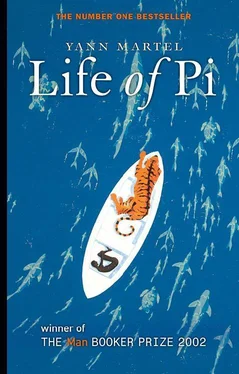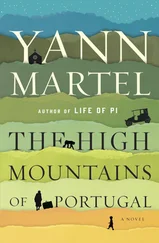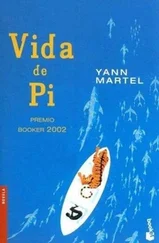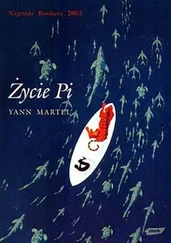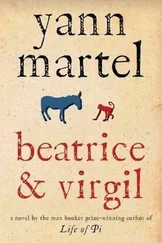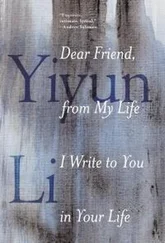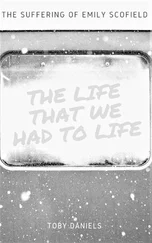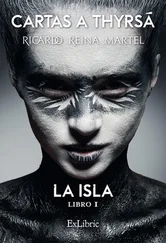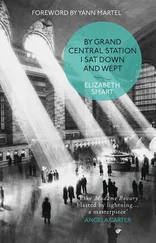I booted up that hill. Though Father Martin was not IN—alas, his block was slid over—thank God he was in.
Short of breath I said, “Father, I would like to be a Christian, please.”
He smiled. “You already are, Piscine—in your heart. Whoever meets Christ in good faith is a Christian. Here in Munnar you met Christ.”
He patted me on the head. It was more of a thump, actually. His hand went BOOM BOOM BOOM on my head.
I thought I would explode with joy.
“When you come back, we’ll have tea again, my son.”
“Yes, Father.”
It was a good smile he gave me. The smile of Christ.
I entered the church, without fear this time, for it was now my house too. I offered prayers to Christ, who is alive. Then I raced down the hill on the left and raced up the hill on the right—to offer thanks to Lord Krishna for having put Jesus of Nazareth, whose humanity I found so compelling, in my way.
Islam followed right behind, hardly a year later. I was fifteen years old and I was exploring my hometown. The Muslim quarter wasn’t far from the zoo. A small, quiet neighbourhood with Arabic writing and crescent moons inscribed on the façades of the houses.
I came to Mullah Street. I had a peek at the Jamia Masjid, the Great Mosque, being careful to stay on the outside, of course. Islam had a reputation worse than Christianity’s—fewer gods, greater violence, and I had never heard anyone say good things about Muslim schools—so I wasn’t about to step in, empty though the place was. The building, clean and white except for various edges painted green, was an open construction unfolding around an empty central room. Long straw mats covered the floor everywhere. Above, two slim, fluted minarets rose in the air before a background of soaring coconut trees. There was nothing evidently religious or, for that matter, interesting about the place, but it was pleasant and quiet.
I moved on. Just beyond the mosque was a series of attached single-storey dwellings with small shaded porches. They were rundown and poor, their stucco walls a faded green. One of the dwellings was a small shop. I noticed a rack of dusty bottles of Thums Up and four transparent plastic jars half-full of candies. But the main ware was something else, something flat, roundish and white. I got close. It seemed to be some sort of unleavened bread. I poked at one. It flipped up stiffly. They looked like three-day-old nans. Who would eat these, I wondered. I picked one up and wagged it to see if it would break.
A voice said, “Would you like to taste one?”
I nearly jumped out of my skin. It’s happened to all of us: there’s sunlight and shade, spots and patterns of colour, your mind is elsewhere—so you don’t make out what is right in front of you.
Not four feet away, sitting cross-legged before his breads, was a man. I was so startled my hands flew up and the bread went sailing halfway across the street. It landed on a pat of fresh cow dung.
“I’m so sorry, sir. I didn’t see you!” I burst out. I was just about ready to run away.
“Don’t worry,” he said calmly. “It will feed a cow. Have another one.”
He tore one in two. We ate it together. It was tough and rubbery, real work for the teeth, but filling. I calmed down.
“So you make these,” I said, to make conversation.
“Yes. Here, let me show you how.” He got off his platform and waved me into his house.
It was a two-room hovel. The larger room, dominated by an oven, was the bakery, and the other, separated by a flimsy curtain, was his bedroom. The bottom of the oven was covered with smooth pebbles. He was explaining to me how the bread baked on these heated pebbles when the nasal call of the muezzin wafted through the air from the mosque. I knew it was the call to prayer, but I didn’t know what it entailed. I imagined it beckoned the Muslim faithful to the mosque, much like bells summoned us Christians to church. Not so. The baker interrupted himself mid-sentence and said, “Excuse me.” He ducked into the next room for a minute and returned with a rolled-up carpet, which he unfurled on the floor of his bakery, throwing up a small storm of flour. And right there before me, in the midst of his workplace, he prayed. It was incongruous, but it was I who felt out of place. Luckily, he prayed with his eyes closed.
He stood straight. He muttered in Arabic. He brought his hands next to his ears, thumbs touching the lobes, looking as if he were straining to hear Allah replying. He bent forward. He stood straight again. He fell to his knees and brought his hands and forehead to the floor. He sat up. He fell forward again. He stood. He started the whole thing again.
Why, Islam is nothing but an easy sort of exercise, I thought. Hot-weather yoga for the Bedouins. Asanas without sweat, heaven without strain.
He went through the cycle four times, muttering throughout. When he had finished—with a right-left turning of the head and a short bout of meditation—he opened his eyes, smiled, stepped off his carpet and rolled it up with a flick of the hand that spoke of old habit. He returned it to its spot in the next room. He came back to me. “What was I saying?” he asked.
So it went the first time I saw a Muslim pray—quick, necessary, physical, muttered, striking. Next time I was praying in church—on my knees, immobile, silent before Christ on the Cross—the image of this callisthenic communion with God in the middle of bags of flour kept coming to my mind.
I went to see him again.
“What’s your religion about?” I asked.
His eyes lit up. “It is about the Beloved,” he replied.
I challenge anyone to understand Islam, its spirit, and not to love it. It is a beautiful religion of brotherhood and devotion.
The mosque was truly an open construction, to God and to breeze. We sat cross-legged listening to the imam until the time came to pray. Then the random pattern of sitters disappeared as we stood and arranged ourselves shoulder to shoulder in rows, every space ahead being filled by someone from behind until every line was solid and we were row after row of worshippers. It felt good to bring my forehead to the ground. Immediately it felt like a deeply religious contact.
He was a Sufi, a Muslim mystic. He sought fana, union with God, and his relationship with God was personal and loving. “If you take two steps towards God,” he used to tell me, “God runs to you!”
He was a very plain-featured man, with nothing in his looks or in his dress that made memory cry hark. I’m not surprised I didn’t see him the first time we met. Even when I knew him very well, encounter after encounter, I had difficulty recognizing him. His name was Satish Kumar. These are common names in Tamil Nadu, so the coincidence is not so remarkable. Still, it pleased me that this pious baker, as plain as a shadow and of solid health, and the Communist biology teacher and science devotee, the walking mountain on stilts, sadly afflicted with polio in his childhood, carried the same name. Mr. and Mr. Kumar taught me biology and Islam. Mr. and Mr. Kumar led me to study zoology and religious studies at the University of Toronto. Mr. and Mr. Kumar were the prophets of my Indian youth.
We prayed together and we practised dhikr, the recitation of the ninety-nine revealed names of God. He was a hafiz, one who knows the Qur’an by heart, and he sang it in a slow, simple chant. My Arabic was never very good, but I loved its sound. The guttural eruptions and long flowing vowels rolled just beneath my comprehension like a beautiful brook. I gazed into this brook for long spells of time. It was not wide, just one man’s voice, but it was as deep as the universe.
Читать дальше
